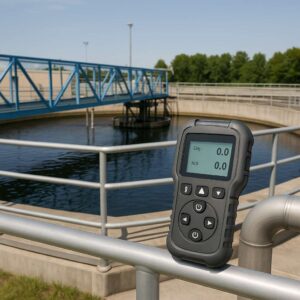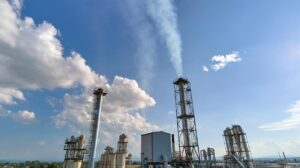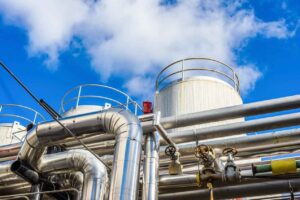Embarking on a journey into the world of Portable Gas Analyzers can seem daunting. Fear not! This guide will illuminate the path.
You’l learn about their uses, key features, and how to choose the right one. Brace yourself for an in-depth analysis of these essential
yet often misunderstood, devices.
Common Applications Of Portable Gas Analyzers!

● Industrial Process Monitoring
Portable gas analyzers play a crucial role in industrial process monitoring. Real-time analysis of gases like oxygen, carbon monoxide, and nitrogen facilitates efficient combustion.
High precision detection ensures optimal fuel usage. Continuous monitoring averts costly operational errors. Swift detection of irregularities upholds safety standards.
● Environmental Monitoring
Portable gas analyzers significantly benefit environmental monitoring. Monitoring ambient air quality becomes simpler.
Detection of harmful gases like sulfur dioxide and nitrous oxide aids pollution control. Monitoring greenhouse gases helps track climate change. Ensuring breathable air quality protects public health.
● Personal Safety And Protection
Personal safety is another vital application. In confined spaces, harmful gases can build up. Portable analyzers detect gases like hydrogen sulfide, methane, and carbon dioxide.
Prompt detection can prevent health hazards. Workers in industries such as mining and construction rely on these devices.
● Hazardous Waste Site Investigation
Hazardous waste sites require careful investigation. Portable analyzers detect toxic gases present.
Knowledge of contaminants like benzene, toluene, or xylene aids in planning remediation efforts. Rapid on-site evaluation reduces exposure risks for investigators. Analyzers provide crucial data for effective waste management.
● Fire And Explosion Investigation
Portable gas analyzers are indispensable in fire and explosion investigations. Detecting traces of accelerants like propane or gasoline can indicate arson.
Identifying gases produced in fires guides safety measures. Real-time analysis provides critical information during emergencies.
● Medical Research And Diagnostics
In medical research and diagnostics, portable gas analyzers are revolutionary. Breath analysis can reveal metabolic disorders or infections.
Detection of volatile organic compounds aids in disease diagnosis. Non-invasive testing improves patient comfort. Portable analyzers contribute to advancing medical science.
● Agriculture And Food Processing
Agriculture and food processing industries utilize portable gas analyzers. Monitoring gases like ammonia and methane in livestock farming aids waste management.
In food processing, analyzers detect gases like carbon dioxide that affect food preservation. Analyzers ensure safe and sustainable practices.
● Leak Detection And Repair
In leak detection and repair, portable gas analyzers are invaluable. Quick detection of gas leaks prevents accidents. Identifying leaks in pipelines or storage tanks ensures safe operations.
Repair teams can act swiftly, reducing downtime. Portable analyzers uphold safety and efficiency.
| Application | Purpose | Type of Gas Detected | Measurement Range | Calibration Frequency | Working Environment |
| Emission Monitoring | Regulation Compliance | CO, NOx, SOx | High PPM – Low % | Annually | Industrial |
| Indoor Air Quality | Health & Safety | CO, CO2, VOCs | Low – Mid PPM | Semi-Annually | Indoor, Public Spaces |
| Engine Exhaust | Performance Monitoring | CO, CO2, NOx | High PPM – Low % | Quarterly | Automotive |
| Flue Gas Analysis | Efficiency Assessment | CO, CO2, O2 | High PPM – Low % | Quarterly | Industrial, Residential |
| Soil Gas Detection | Environmental Assessment | CH4, CO2, VOCs | Low – Mid PPM | Semi-Annually | Outdoor |
| Workplace Safety | Health & Safety | CO, CO2, H2S | Low – Mid PPM | Quarterly | Industrial, Commercial |
| Landfill Gas Monitoring | Environmental Regulation | CH4, CO2, VOCs | High PPM – Mid % | Annually | Outdoor, Landfill |
Top Features Of Portable Gas Analyzers!
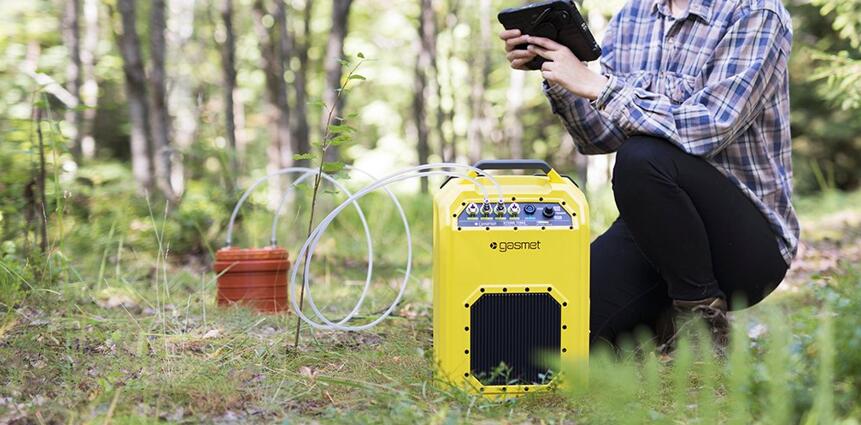
1. Measurement Capabilities:
Portable Gas Analyzers excel in their diverse measurement capabilities. Detecting various gases, such as oxygen, carbon monoxide, and hydrogen sulfide, is a breeze. High-precision sensors offer accuracy. Multiple ranges exist for each gas type, ensuring optimal readings.
Moreover, units can handle temperature extremes, allowing for operation in various environments. Next, analyzers can perform continuous or periodic measurements, catering to specific needs.
2. User Interface And Display:
A good user interface is pivotal for easy operation of Portable Gas Analyzers. Bright, clear displays show vital data, even in sunlight.
Numeric and graphical data representation options enhance understanding. Some models offer multi-language support, breaking language barriers. Touchscreen controls make navigation effortless.
3. Connectivity Options And Storage:
Connectivity options in Portable Gas Analyzers are impressive. Most units have USB ports for data transfer. Ethernet ports allow for network connections.
Wireless options like Wi-Fi and Bluetooth offer remote monitoring. Regarding storage, internal memory can hold hundreds of thousands of readings. Furthermore, expandable storage options exist for data-heavy applications.
4. Battery Life:
Battery life is a significant concern for Portable Gas Analyzers. Many models boast more than 12 hours of continuous operation. Some even reach 24 hours!
Fast-charging capabilities ensure less downtime. Additionally, battery health indicators provide timely alerts for recharging.
5. Durability And Ruggedness:
Portable Gas Analyzers are designed for durability. High-strength plastic bodies resist impacts. Rubberized edges offer additional protection.
The analyzers can withstand falls from significant heights. Many are dustproof and waterproof, suitable for harsh environments. Extreme temperature resilience is another hallmark of their ruggedness.
6. Sensor Types And Technologies:
Sensor technology is the heart of Portable Gas Analyzers. Electrochemical sensors detect toxic gases. Infrared sensors are used for combustible gases.
PID (Photoionization Detectors) sensors find volatile organic compounds. Some units feature interchangeable sensors, allowing customization for different gas types.
7. Real-Time Data Analysis:
Real-time data analysis is a standout feature in Portable Gas Analyzers. Units can perform instant calculations on collected data.
Alarm triggers based on threshold breaches ensure safety. Time-stamped readings enable trend analysis over periods. Some models even offer predictive analytics, flagging potential risks ahead of time.
| Feature | Oxygen Analyzer | Carbon Monoxide Analyzer | Hydrocarbon Analyzer | Nitrogen Oxides Analyzer | Sulphur Dioxide Analyzer |
| Measurement Type | % O2 | PPM CO | PPM HC | PPM NOx | PPM SO2 |
| Measurement Range | Wide | Wide | Limited | Wide | Limited |
| Sampling Method | Direct | Direct | Direct | Direct | Direct |
| Hazardous Area Rated | Yes | Yes | Yes | Yes | Yes |
| Portable | Yes | Yes | Yes | Yes | Yes |
| Easy-to-use | Yes | Yes | Yes | Yes | Yes |
| Fast Response Time | Yes | Yes | Yes | Yes | Yes |
Factors To Consider When Choosing A Portable Gas Analyzer!
Delving into the world of portable gas analyzers, various elements require your attention. Let’s outline those critical factors now.
● Accuracy And Sensitivity
High precision stands paramount in a gas analyzer. Lower detection limits, usually measured in parts per million (ppm), ensure fine accuracy.
However, sensitivity plays an equally important role. Greater sensitivity allows trace gas detection, providing you with precise results. Remember, both factors are vital for reliable readings.
● Detection Range And Response Time
An analyzer’s detection range determines the types of gases it can detect. The broader the range, the more versatile the analyzer will be.
Equally crucial is response time. Shorter response times mean quicker results, enhancing efficiency during testing.
● Sensor Lifespan
The longevity of the analyzer’s sensor is a key consideration. Longer-lasting sensors reduce maintenance costs and downtime.
Electrochemical sensors, for example, typically have a lifespan of two to three years, offering durable service.
● Size And Weight
Consider the analyzer’s physical characteristics. Compact and lightweight models prove easier to carry, especially in field applications. However, ensure that size reduction doesn’t compromise the analyzer’s performance.
● Ease Of Use
A user-friendly interface can significantly improve your experience. Look for analyzers with clear displays and intuitive controls. Modern units often offer Bluetooth connectivity, allowing for remote data management.
● Cost
While assessing cost, focus not only on the purchase price but also the long-term maintenance expenses. A cheaper analyzer may prove costly if it requires frequent sensor replacements or repairs.
● Customer Support
Reliable customer support can save you from potential technical difficulties. Check if the manufacturer offers timely assistance and has a solid reputation for customer service.
H. Compatibility
Lastly, ensure the analyzer is compatible with your intended applications. Some models offer multi-gas detection or specific features for certain industries. Choose an analyzer that matches your unique needs.
Proper Use And Maintenance Of Portable Gas Analyzers!
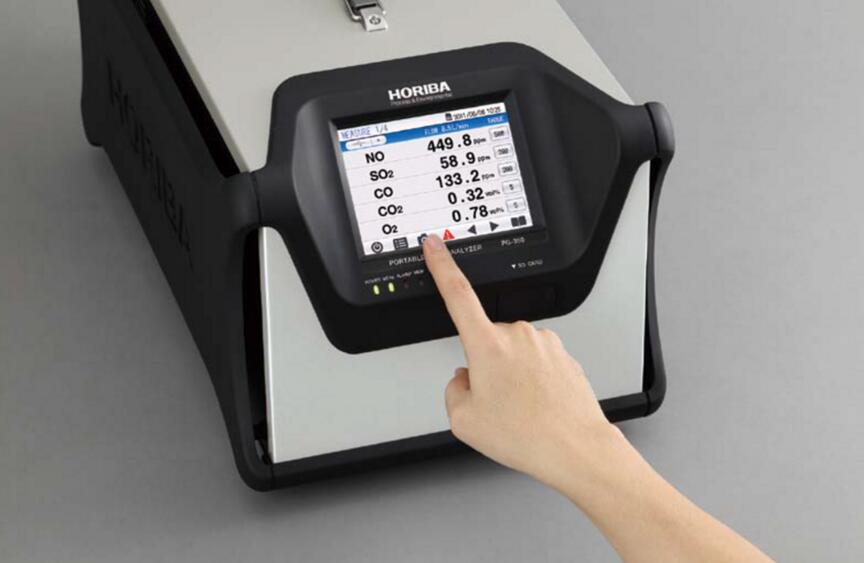
Crucial steps wait in the setup, calibration, routine maintenance, and troubleshooting of portable gas analyzers. Expert knowledge, authority, and trustworthiness will guide every step hereafter.
Initial Setup And Calibration!
- Unbox your analyzer, ensure safe handling. Delicate components inside require gentle care. Mishandling might lead to imprecise readings later.
- On finding the power button, turn the device on. A successful startup displays indicators on the screen.
- Calibration is a must before use. Default calibration settings might not suffice for all environments.
- Calibration involves specific gases. Oxygen, Carbon Monoxide, Hydrogen Sulfide, and Methane are common calibration gases.
- Attach the calibration gas cylinder to your device. The device manual details the correct attachment method.
- Begin calibration, follow instructions on the screen. Every analyzer has a unique calibration process.
- Calibration concludes when the device displays a confirmation message. Don’t interrupt the process midway.
- Detach the calibration cylinder post-confirmation. Your analyzer is ready for use.
Routine Maintenance Tasks!
- Regular calibration ensures the analyzer’s accuracy. Calibration once every 30 days is a good practice.
- Keep the device clean. Dust or debris might affect sensor efficiency.
- Check battery status regularly. Unexpected power loss might lead to inaccurate readings.
- Inspect the device for physical damage. A small crack can alter device performance.
- Secure the device when not in use. Store in a clean, dry place.
- Regularly update device software, if applicable. Manufacturers release updates for better performance.
- Always follow manufacturer guidelines for maintenance. Negligence might void warranty terms.
Troubleshooting Common lssues!
- “No Power” is a common issue. Check the battery and connections.
- If inaccurate readings persist, recalibrate the device. Calibration errors are common and fixable.
- Device malfunction? Check for physical damages. Tiny cracks might affect device function.
- Low battery warnings often cause panic. Charge your device regularly to avoid such issues.
- Dust or debris in the sensors? Clean gently without damaging the sensors.
- Software glitches? Update to the latest version. Consult manufacturer if issues persist.
- Issues post calibration? Ensure correct calibration gas was used.
- Errors persisting? Contact customer service. Manufacturer assistance might be required for complex issues.
Regulatory Compliance And Certification!
Understanding Relevant Regulations And Standards
Safety is paramount. Every professional knows how important understanding regulations and standards is. Standards like ISO 9001 set the benchmark for quality. ASTM D1946 outlines the procedure for analyzing permanent gases.
Similarly, ASTM D6348 focuses on gaseous fuels. Professionals must understand these regulations deeply. Equipment, including portable gas analyzers, must comply.
Adherence to ISO 6145-7 proves the analyzer’s calibration capabilities. Comprehension of ISO 19739 is also crucial for the analysis of natural gas. ISO 6974-5 provides guidance on determining composition and associated uncertainty. All these standards outline the benchmark for performance.
Non-compliance isn’t an option. Compliance is a priority, ensuring protection for all.
Ensuring Compliance With Portable Gas Analyzers
Compliance is a demanding but necessary task. Portable gas analyzers must meet many stringent standards. They should follow ISO 25139, which details the working principle of these devices. In addition, ISO 10715 provides guidelines for calibration checks. Further, ISO 6975 discusses precision and bias in the analytical results.
Compliance with ASTM D6522 allows the analysis of gaseous fuels. Also, adherence to ISO 10723 validates the performance of the analyzers. Each of these standards plays a vital role. They ensure the reliability of the measurements.
By adhering to these standards, portable gas analyzers provide accurate readings. They help protect workers and the environment. Compliance ensures safety and reliability.
Obtaining Necessary Certifications
Certification is the final step. It confirms the analyzer’s compliance with standards. Several reputable bodies issue these certifications. They include ISO, ASTM, and others.
Obtaining certification for ISO 9001 is essential. It proves the product’s quality. ASTM certification is also important. It confirms the analyzer’s capability to conduct the specified tests. ISO 25139 certification validates the working principle.
ISO-10723 certification attests to the analyzer’s performance. To get certified, the analyzers must pass rigorous testing. Only then can they earn the certification.
Certification signifies trustworthiness. It assures users of the product’s safety and reliability. It instills confidence in the device’s performance. With these certifications, your portable gas analyzer is ready to serve with excellence.
Q&A
Q: What Is A Portable Gas Analyzer?
A:Portable gas analyzers are compact devices. They measure gas composition accurately. They help detect toxic substances in the environment.
Q: Why Choose A Portable Gas Analyzer?
A:Choosing a portable gas analyzer is wise. Its convenience factor is high. It offers real-time data and measures multiple gases simultaneously.
Q: How Do Portable Gas Analyzers Ensure Safety?
A:Portable gas analyzers provide safety. They alert users to harmful gases. Constant monitoring and instant alerts safeguard health and the environment.
Q: Can Portable Analyzers Detect Various Gases?
A:Yes, portable analyzers are versatile. They can detect a wide array of gases. From carbon dioxide to methane, they ensure comprehensive coverage.
Q: What Is The Typical Range For Portable Analyzers?
A:A typical range for portable analyzers varies. Detection levels start from parts per million (PPM) to percentage levels. The range depends on the specific model and application.
Q: How Precise Are Portable Gas Analyzers?
A:Precision in portable gas analyzers is high. Advanced sensors yield accurate results. They provide precise readings, making them reliable tools in gas detection.
Q: Are Portable Gas Analyzers User-Friendly?
A:User-friendliness is a hallmark of portable gas analyzers. They offer simple operation. Clear displays, intuitive controls, and lightweight designs ensure easy use.
Q: What Maintenance Do Portable Analyzers Require?
A:Maintenance for portable analyzers is straightforward. Regular calibration ensures accurate readings. Cleaning the sensors and replacing batteries are common practices.
Q: Can Portable Analyzers Connect To Smartphones Or Tablets?
A:Modern portable analyzers offer connectivity. Bluetooth or Wi-Fi options are common. They can sync data to smartphones or tablets for convenient access.
Q: Are Portable Gas Analyzers Battery-Operated?
A:Most portable gas analyzers are battery-operated. Their power source is often rechargeable. This provides flexibility and mobility, essential for field operations.
Conclusion
Navigating the realm of Portable Gas Analyzers may seem complex, but armed with the knowledge from this guide, you’re ready to make an informed decision.
Remember, the right analyzer is the one that suits your specific needs. For a wide selection of quality, reliable Portable Gas Analyzers, consider visiting ESEGas.
Their expertise and high-quality products can provide the safety and efficiency you need, instilling confidence in every measurement you make.





